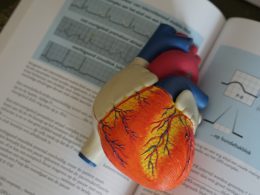As the world’s population continues to grow, our demand for food increases. And while meat has long been a staple in many diets around the globe, its impact on the environment cannot be ignored. From greenhouse gas emissions to land use and water consumption, the livestock industry takes a significant toll on our planet. In this blog post, we’ll take a closer look at why we need to rethink our diets and consider some alternatives to meat that are better for both us and the environment. So grab your favorite plant-based snack and let’s dive in!
The Livestock Industry’s Impact on the Environment
The livestock industry is one of the major contributors to environmental degradation. The production, processing and transportation of meat products require large amounts of resources, including water, energy and land. Such activities have a significant impact on our planet’s ecosystems.
One of the most concerning aspects of the livestock industry is its contribution to greenhouse gas emissions. Cattle, in particular, are responsible for producing vast amounts of methane through their digestive processes. This potent greenhouse gas has a much greater warming effect than carbon dioxide.
In addition to greenhouse gases, the livestock industry also uses a considerable amount of water. It takes approximately 1,800 gallons of water to produce just one pound of beef! This high demand for water puts pressure on already scarce resources in many parts of the world.
The production and consumption habits associated with meat also result in significant deforestation globally. Forests are cleared at an alarming rate to make way for grazing lands or crops grown as animal feed. This loss leads to habitat destruction and biodiversity decline.
While there are certainly economic benefits associated with the livestock industry, it’s important that we consider its full impact on our environment too.
The greenhouse gas emissions of the livestock industry
The livestock industry is a major contributor to greenhouse gas emissions that are causing climate change. According to the Food and Agriculture Organization, the livestock sector accounts for 14.5% of global greenhouse gas emissions, more than all modes of transportation combined.
One reason for this is that animals like cows produce methane as part of their digestive process, which has around 25 times more warming potential than carbon dioxide. In addition, the production and transportation of animal feed also contribute to emissions.
The meat industry’s reliance on fossil fuels for energy also adds to its carbon footprint. From transporting animals to processing and packaging meat products, every step requires significant amounts of energy.
Furthermore, land use changes related to agriculture have contributed significantly to deforestation and associated increases in atmospheric carbon concentrations. The expansion of grazing lands contributes directly or indirectly through pasture degradation while intensive feedcrops cultivation frequently leads to soil erosion, nutrient depletion in soils or pollution from fertilizers and pesticides.
Reducing our consumption of meat can help reduce greenhouse gas emissions by lowering demand for animal products – this shift would result in lower levels of deforestation required for producing food crops such as soybeans used as animal feeds thereby reducing overall GHG emissions linked with agricultural intensification practices.
The water consumption of the livestock industry
The water consumption of the livestock industry is a concerning issue that often goes unnoticed. It takes an astonishing amount of water to produce meat, which contributes significantly to the world’s water crisis.
On average, it takes approximately 1,800 gallons of water to produce just one pound of beef. This is a stark contrast compared to producing vegetables or grains, which require much less water in comparison.
Moreover, the majority of this water usage comes from growing crops for animal feed and maintaining livestock hydration needs. In particular regions with drought issues and freshwater scarcity concerns, this excessive use of resources can be detrimental.
Additionally, as global demand for meat continues to rise exponentially year over year so does its impact on our environment and freshwater resources around the globe.
Therefore it’s essential we make conscious food choices by reducing our meat intake and opting for more plant-based options like lentils or chickpeas that consume less overall resources while still providing adequate protein sources necessary for good health.
The land use of the livestock industry
The land use of the livestock industry is a major contributor to deforestation and habitat loss. In order to provide grazing land for animals, large areas of forests are cleared, destroying natural habitats and contributing to soil erosion. The amount of land used for livestock production is also increasing rapidly due to the growing demand for meat.
Moreover, this expansion in livestock farming has led to overgrazing which severely damages the quality and fertility of the soil. This results in reduced agricultural productivity and causes long-term environmental damage.
In addition, animal waste from factory farms often contaminates local water sources with excess nutrients such as nitrogen and phosphorus leading to eutrophication – an increase in algae growth that can result in fish kills and dead zones.
Furthermore, intensive animal agriculture also contributes significantly when it comes to greenhouse gas emissions responsible for climate change. As more forests are cut down or burned, carbon stored within trees is released into the atmosphere accelerating global warming further.
Therefore reducing our consumption of meat can help us mitigate these impacts on land use by decreasing our dependence on industrial-scale farming practices while promoting sustainable food systems like agroforestry that combine tree cultivation with traditional crop cultivation techniques.
What are some alternatives to meat?
If you are looking to reduce your meat consumption, there are plenty of alternatives out there that can provide the same level of protein and nutrition. Here are just a few options:
1. Legumes: Beans, lentils, chickpeas, and peas are all great sources of protein and fiber. They can be used in soups, stews, salads or made into burgers.
2. Tofu: Made from soybeans, tofu is a versatile ingredient that can take on any flavor you like when cooked properly. Try using it in stir-fries or as a substitute for ground beef in tacos.
3. Tempeh: Similar to tofu but with a nuttier taste and firmer texture due to its fermentation process.
4. Seitan: A high-protein wheat gluten product that has been gaining popularity due to its meat-like texture.
5. Plant-based meat substitutes: There’s an ever-growing range of plant-based products available on the market which mimic the taste and texture of real meat such as Beyond Meat or Impossible Burger
Remember that eating less meat doesn’t have to mean eating less delicious meals! Experimenting with different ingredients can open up a world of new flavors and possibilities for your diet while helping you do your part for the environment too!
Conclusion
It’s clear that the livestock industry is having a significant impact on our environment. From greenhouse gas emissions to water consumption and land use, the meat industry is taking its toll on our planet.
But it’s not all doom and gloom. By making small changes to our diets, we can reduce the environmental cost of meat. Choosing plant-based alternatives or reducing our overall meat consumption can make a big difference.
It’s also important for us to hold large-scale producers accountable for their actions and demand more sustainable practices from them. As consumers, we have the power to drive change in this industry by choosing eco-friendly options whenever possible.
In short, rethinking our diets is crucial if we want to preserve our planet for generations to come. Small changes today can make a huge impact tomorrow – both for ourselves and for future generations who will inherit this world from us.












